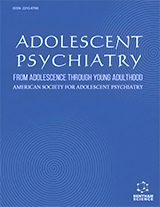Abstract
The utilization of tryptophan for the synthesis of serotonin, allows some of this serotonin to be broken down into N-acetylserotonin (NAS) and melatonin, forming the melatoninergic pathways. Many of the changes and susceptibility factors associated with Alzheimer's disease (AD) regulate, and can be regulated by, the melatoninergic pathways. Melatonin is well known for its night-time release by the pineal gland, which contributes to entraining the circadian rhythm. Decreased pineal melatonin and disruption of the circadian rhythm is common in AD, with melatonin supplementation affording significant protection against cognitive deficits and circadian disruption in most clinical trials. Melatonin is also a significant regulator of the immune system, where its effects afford protection against immuno-senescence and associated alterations in immune responses in AD patients. Being a significant antioxidant, antiinflammatory and optimizer of mitochondrial functioning, melatonin has many benefits in AD.
Recent data shows that melatonin is produced by many other, if not all, human cells, including astrocytes and immune cells. The release of melatonin by these cells allows for autocrine and paracrine effects that decrease the reactivity of glia and immune cells. Given the role of heightened glia and immune cell reactivity in AD, local melatonin synthesis by these cells is a significant pharmaceutical target.
NAS may be more than simply the immediate precursor of melatonin. NAS is also a powerful antioxidant as well as being a brain derived neurotrophic factor (BDNF) mimic. Given the general protective effects of BDNF and its decrease in AD, NAS is likely to afford protection in AD patients, with effects not necessarily the same as those of melatonin.
In this chapter, we review the role of the melatoninergic pathways in AD, highlighting its usefulness in managing this devastating, and still poorly treated, disease.






















